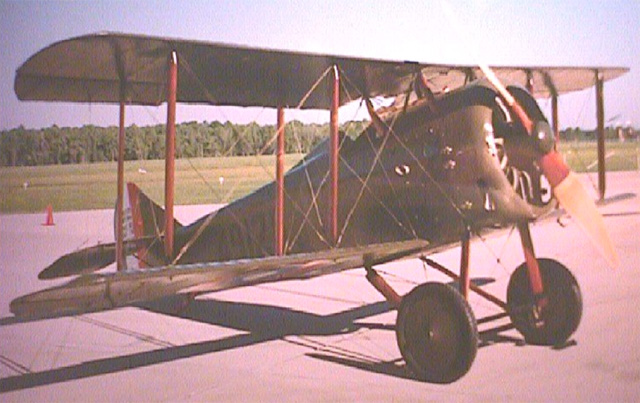
1918 Standard E-1
The E-1 was designed in 1917 by Standard Aircraft in Elizabeth, New Jersey, and is constructed mainly of wood. A contract for four prototypes was accepted by the Army Signal Corps as an airfield defense fighter.
When production began in January of 1918, the first two were delivered with 100 hp Gnome rotary engines. Stability and maneuverability were acceptable, but the aircraft was considered underpowered and lightly armed with only one machine gun. The order for the other two was cancelled.
All was not lost, however, as the Air Corps needed advanced trainers and, after some modifications, 460 were ordered with the 100 hp Gnome. Because of student difficulty in operating the Gnome engine, by mid-1918, production stopped after 93 were built. Towards the end of 1918, an additional 75 were built with the 80 hp Le Rhône rotary engine that was license-built by the Union Switch Company. When World War I ended in November of 1918, all orders were cancelled.
Specifications
- Year Built — 1918
- Wingspan — 24′
- Cruise Speed — 100 mph
- Gross Weight — 1,140 lbs
- Original Engine — Le Rhône rotary (80 hp)
- Armament — Camera gun for target practice
Kermit’s Comments
The Le Rhône design is one of the few rotary engines that have any degree of “throttle-ability.” The pilot has two levers in the cockpit and a blip switch that control the engine. One lever controls a tapered needle valve that regulates how much fuel the engine receives. The other lever operates a slide valve located in an air box. This slide valve is mounted on the rear of the fixed crankshaft and can be adjusted to determine how much air the engine is allowed to take in. With the two levers, the pilot can “throttle” the engine down to a speed around 800 rpm. Below that point, the engine just quits. Since 800 rpm is too fast to taxi and land, the “blip” switch on the control stick is utilized to “kill” the engine and further slow the aircraft down. When the pilot needs power again, he simply releases the blip switch and the engine roars to life. With the two levers to control the fuel and the air, THE PILOT IS THE CARBURETOR!